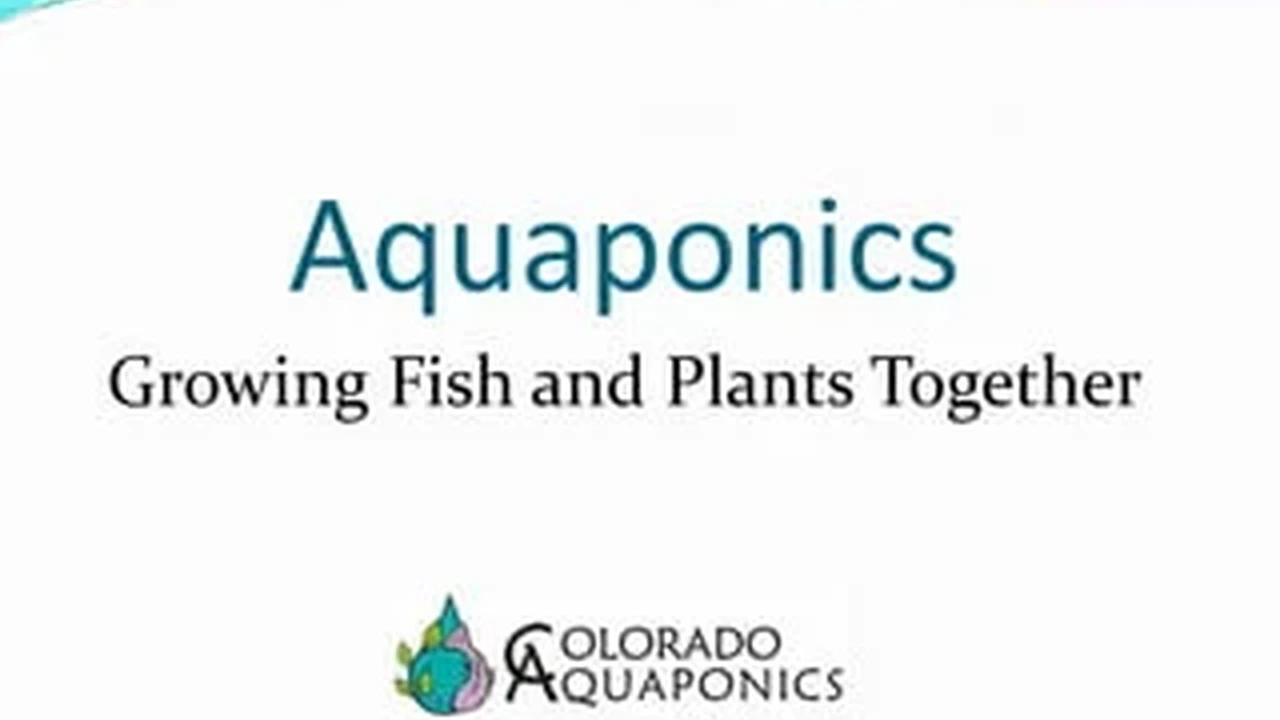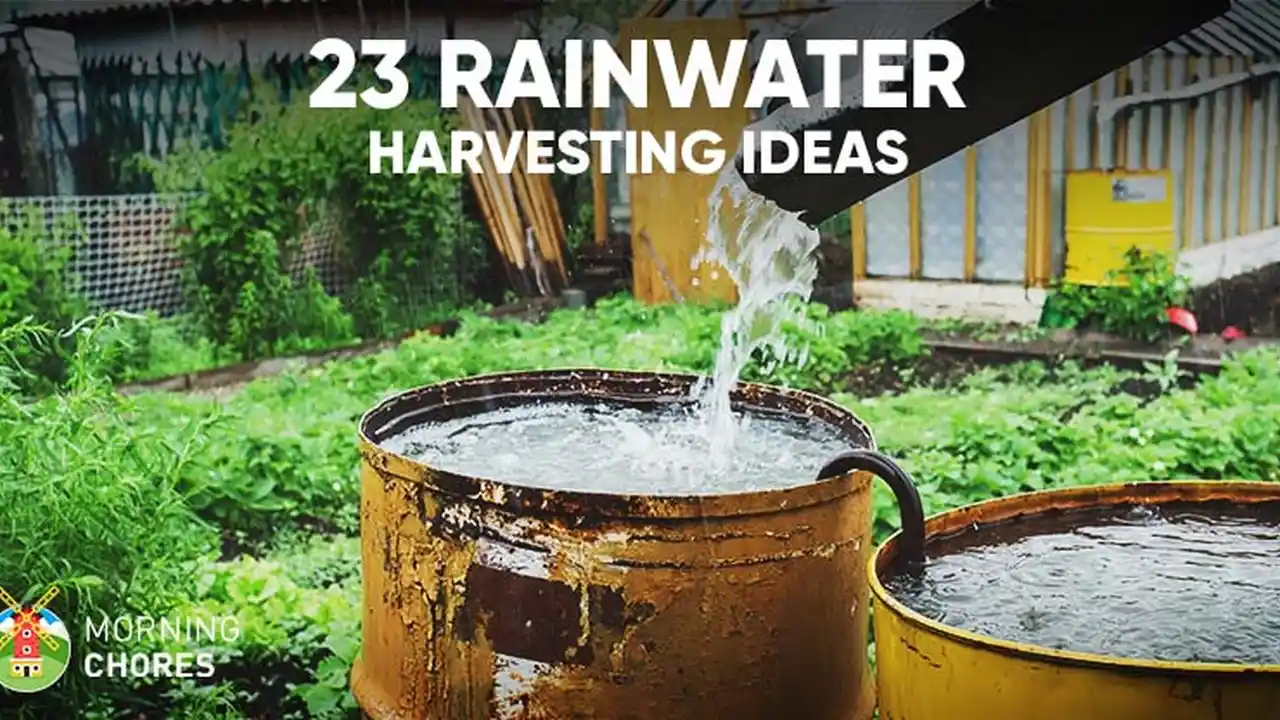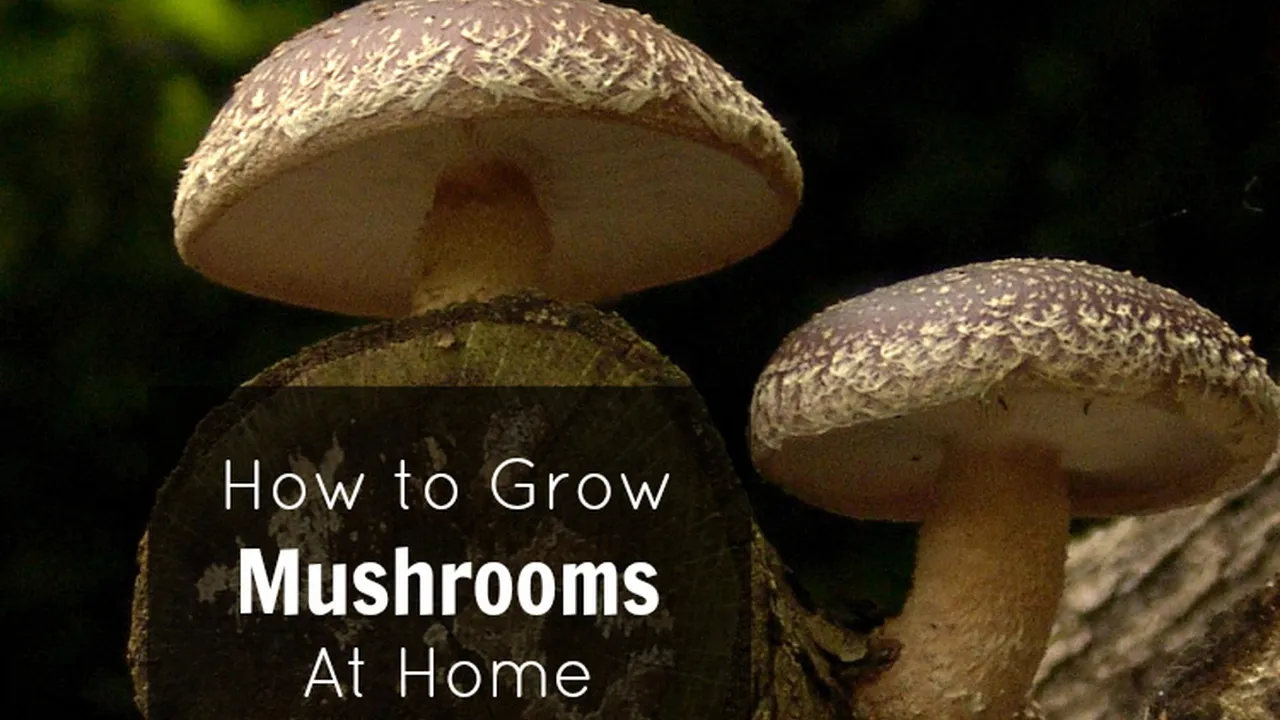Aquaponics for Beginners Integrating Fish and Plants
Explore the basics of aquaponics, combining aquaculture and hydroponics. A sustainable way to grow food.

Aquaponics for Beginners Integrating Fish and Plants
What is Aquaponics Understanding the Symbiotic System
Aquaponics is a revolutionary food production system that combines aquaculture (raising aquatic animals like fish) with hydroponics (growing plants without soil) in a symbiotic environment. It's a closed-loop system where fish waste provides nutrients for the plants, and the plants, in turn, filter the water for the fish. This creates a sustainable and efficient way to grow both protein and produce, often with significantly less water than traditional farming methods. Imagine fresh fish and crisp lettuce growing together in your backyard – that's the magic of aquaponics!
The core principle is simple: fish produce waste, primarily ammonia. This ammonia is toxic to fish in high concentrations. However, beneficial bacteria convert this ammonia first into nitrites and then into nitrates. Nitrates are a primary nutrient source for plants. As the plants absorb these nitrates, they effectively clean the water, which is then recirculated back to the fish tank. This natural filtration process eliminates the need for chemical fertilizers for the plants and reduces the frequency of water changes for the fish, making it an incredibly resource-efficient system.
For beginners, understanding this cycle is crucial. It's not just about putting fish and plants together; it's about creating a balanced ecosystem where each component supports the other. The beauty of aquaponics lies in its elegance and efficiency, offering a glimpse into the future of sustainable agriculture.
Why Choose Aquaponics Benefits for Home Growers
There are numerous compelling reasons why aquaponics is gaining popularity among home growers. First and foremost, it's incredibly water-efficient. Aquaponics systems use up to 90% less water than traditional soil-based gardening because the water is recirculated and reused. This is a huge advantage, especially in drought-prone areas or for environmentally conscious gardeners.
Secondly, aquaponics offers faster plant growth. Plants in aquaponics systems often grow faster than those in soil because they have constant access to nutrient-rich water and oxygen. This means quicker harvests and more produce from a smaller footprint. You can also grow a wider variety of plants, from leafy greens and herbs to fruiting vegetables like tomatoes and peppers.
Another significant benefit is the absence of soil-borne diseases and pests. Since there's no soil, you eliminate many common gardening problems, reducing the need for pesticides and herbicides. This results in healthier, cleaner produce. Plus, you get to harvest fresh fish, providing a sustainable source of protein right from your home.
Finally, aquaponics can be incredibly rewarding. It's a fascinating blend of biology, chemistry, and engineering, offering a continuous learning experience. It's also a great way to teach children about sustainable food systems and the interconnectedness of nature.
Essential Components Building Your First Aquaponics System
To get started with aquaponics, you'll need a few key components. Understanding each part is crucial for setting up a successful system.
Fish Tank Choosing the Right Size and Material
The fish tank is the heart of your aquaponics system. Its size will largely determine how many fish you can raise and, consequently, how many plants you can support. For beginners, a tank between 50 to 100 gallons (approximately 190-380 liters) is a good starting point. This size is manageable and provides enough water volume to maintain stable conditions for both fish and plants. Larger tanks offer more stability but require more space and initial investment.
Material-wise, food-grade plastic tanks (like IBC totes cut in half), fiberglass, or even large plastic barrels are excellent choices. Avoid anything that might leach harmful chemicals into the water. Glass aquariums can work for very small systems, but they are heavy and less durable for larger setups. Ensure your tank is opaque to prevent algae growth, which can compete with your plants for nutrients and create water quality issues.
Grow Beds Selecting Media and Design
The grow beds are where your plants will thrive. There are several types of grow beds, each with its own advantages:
- Media Beds (Flood and Drain/Ebb and Flow): These are the most popular for beginners. They are filled with an inert growing medium like clay pebbles (hydroton), lava rock, or gravel. Water from the fish tank floods the grow bed, providing nutrients to the plant roots, and then drains back into the fish tank. This cycle provides both water and oxygen to the roots, preventing root rot.
- Deep Water Culture (DWC) / Raft Systems: In DWC, plants are suspended in rafts that float directly on the surface of the nutrient-rich water. The roots are constantly submerged. This system is excellent for leafy greens and herbs, offering rapid growth. It requires good aeration of the water.
- Nutrient Film Technique (NFT): NFT systems involve a thin film of nutrient-rich water flowing over the roots of plants in channels. This method is highly efficient for plants with smaller root systems, like lettuce and strawberries. It requires precise water flow and can be more prone to clogging if not properly maintained.
For media beds, ensure the grow bed is sturdy enough to hold the weight of the water and media. A common ratio is 1:1 or 1:2 grow bed volume to fish tank volume, but this can vary based on fish density and plant type.
Water Pump and Plumbing Ensuring Circulation
A reliable water pump is essential for circulating water between the fish tank and the grow beds. The pump should be sized to turn over the entire volume of your fish tank at least once per hour. For example, a 100-gallon tank would need a pump with a flow rate of at least 100 gallons per hour (GPH).
Plumbing involves connecting the pump to the grow beds and setting up a return line from the grow beds back to the fish tank. PVC pipes and fittings are commonly used due to their durability and ease of assembly. Ensure all connections are watertight to prevent leaks. For media beds, a bell siphon or auto-siphon is often used to automate the flood and drain cycle, making the system more hands-off.
Air Pump and Air Stone Oxygenating the Water
Fish need oxygen to survive, and plants also benefit from oxygenated water. An air pump connected to an air stone in the fish tank will provide the necessary aeration. The size of the air pump should be appropriate for your fish tank volume. Look for pumps designed for aquariums or ponds. Proper oxygenation is critical for fish health and the beneficial bacteria that convert fish waste into plant nutrients.
Biofilter The Bacterial Powerhouse
While media beds often act as their own biofilters due to the large surface area for beneficial bacteria to colonize, dedicated biofilters are crucial for DWC and NFT systems. A biofilter provides a large surface area for nitrifying bacteria to grow, converting ammonia and nitrites into nitrates. Common biofilter media include bio-balls, Kaldnes K1 media, or even simple scrubbies. The biofilter should be placed in a well-aerated area where water from the fish tank flows through it before reaching the plants.
Choosing Your Aquatic Inhabitants Best Fish for Aquaponics
Selecting the right fish species is vital for a successful aquaponics system. Consider factors like growth rate, temperature tolerance, disease resistance, and suitability for consumption.
Tilapia The Aquaponics Workhorse
Tilapia are by far the most popular fish for aquaponics, especially for beginners. They are incredibly hardy, tolerant of a wide range of water conditions, grow quickly, and are excellent at producing waste that feeds plants. They are also a delicious and sustainable food source. However, be aware that some regions have restrictions on raising tilapia due to their invasive potential if released into natural waterways.
Other Popular Fish Species
- Trout: If you live in a cooler climate, trout (like Rainbow Trout) can be an excellent choice. They require cooler water temperatures and higher oxygen levels than tilapia but grow quickly and are highly prized for their flavor.
- Catfish: Channel Catfish are another hardy option, tolerant of various water conditions. They grow large and are good for consumption.
- Koi and Goldfish: While not typically raised for food, koi and goldfish are excellent choices for ornamental aquaponics systems. They are very hardy and produce plenty of waste for plants, making them ideal for educational or decorative setups.
- Perch: Species like Jade Perch or Silver Perch are gaining popularity for their good growth rates and taste, especially in warmer climates.
Regardless of your choice, research the specific needs of your chosen fish species regarding water temperature, pH, and feeding requirements.
Planting Your Garden Best Plants for Aquaponics
Almost any plant that thrives in hydroponics can also thrive in aquaponics. However, some plants are better suited for beginners due to their nutrient requirements and growth habits.
Leafy Greens and Herbs The Beginner's Best Friend
Leafy greens like lettuce (various varieties), spinach, kale, Swiss chard, and arugula are excellent choices for beginners. They have relatively low nutrient demands and grow quickly. Herbs such as basil, mint, cilantro, parsley, and chives also do exceptionally well in aquaponics systems. These plants are perfect for getting a feel for the system's balance and enjoying quick harvests.
Fruiting Vegetables Expanding Your Harvest
Once you're comfortable with leafy greens, you can experiment with fruiting vegetables. Tomatoes, cucumbers, bell peppers, strawberries, and even some varieties of beans and peas can be successfully grown in aquaponics. These plants generally require more nutrients and a more mature system with a higher fish load to provide sufficient food. They may also need support structures as they grow.
Plants to Approach with Caution
Root vegetables like carrots, potatoes, and onions can be challenging in media beds as they require a loose medium for root development. They are generally not recommended for DWC or NFT systems. Also, plants that prefer very acidic or alkaline soil conditions might struggle if the water pH is optimized for fish (typically neutral to slightly alkaline).
Water Quality Management Maintaining a Healthy Ecosystem
Maintaining optimal water quality is paramount for the health of both your fish and plants. Regular testing and adjustments are crucial.
pH Levels The Balancing Act
pH is a measure of acidity or alkalinity. In aquaponics, you're trying to find a balance that suits both fish and plants. Most fish prefer a pH between 6.5 and 7.5. Plants generally prefer a slightly more acidic environment (5.5-6.5) for optimal nutrient uptake. A good compromise for aquaponics is often a pH between 6.0 and 7.0. You'll need a reliable pH test kit (liquid drops or digital meter) and learn how to adjust pH using natural buffers like potassium bicarbonate (to raise pH) or phosphoric acid (to lower pH).
Ammonia Nitrite and Nitrate Monitoring the Nitrogen Cycle
These are the key indicators of your system's health. Ammonia and nitrites should ideally be at 0 ppm (parts per million) once your system is cycled and mature. Nitrates, the plant food, should be present, typically in the range of 5-150 ppm, depending on your plant load. High levels of ammonia or nitrites indicate an imbalance in your nitrogen cycle, often due to overfeeding fish or an immature biofilter. Regular testing with an aquarium test kit is essential.
Water Temperature Keeping Fish and Plants Happy
Water temperature affects fish metabolism, oxygen levels, and bacterial activity. Most common aquaponics fish like tilapia thrive in warmer water (75-85°F or 24-30°C), while trout prefer cooler temperatures (50-65°F or 10-18°C). Ensure your chosen fish and plants are compatible with your system's temperature range. Heaters or chillers might be necessary depending on your climate and fish species.
Cycling Your System Establishing the Nitrogen Cycle
Before adding fish, you need to 'cycle' your aquaponics system. This process establishes the beneficial nitrifying bacteria that convert fish waste into plant nutrients. It typically takes 4-6 weeks.
Fishless Cycling The Safer Approach
For beginners, fishless cycling is highly recommended. It involves adding an ammonia source (like pure ammonia solution or fish food) to the water to kickstart bacterial growth. You'll monitor ammonia, nitrite, and nitrate levels until ammonia and nitrite consistently read zero, and nitrates are present. This method is less stressful for fish as they are only introduced once the system is stable.
Fish-In Cycling A More Challenging Method
Fish-in cycling involves adding a small number of hardy fish to the system from the start. This method is more challenging as you need to carefully monitor water parameters and perform frequent water changes to keep ammonia and nitrite levels safe for the fish. It's generally not recommended for first-timers.
Common Challenges and Troubleshooting Tips
Like any gardening endeavor, aquaponics can present challenges. Knowing how to troubleshoot common issues will save you a lot of headaches.
Algae Growth Causes and Solutions
Algae thrive in nutrient-rich water and light. Excessive algae can compete with your plants for nutrients and clog pipes. To prevent it, ensure your fish tank and plumbing are opaque, blocking out light. You can also introduce snails or certain fish (like plecos) that consume algae. Reducing light exposure to the water is the primary solution.
Nutrient Deficiencies in Plants Identifying and Addressing
Even with fish waste, plants can sometimes show signs of nutrient deficiencies, especially for micronutrients like iron, potassium, or calcium. Yellowing leaves (chlorosis) are a common sign. This often indicates a pH imbalance, as pH affects nutrient availability. Adjusting pH is usually the first step. If deficiencies persist, you might need to add chelated iron or other mineral supplements specifically designed for aquaponics (ensure they are fish-safe).
Fish Health Issues Prevention and Treatment
Poor water quality is the leading cause of fish disease. Maintain stable water parameters, avoid overfeeding, and provide good aeration. If fish show signs of stress (gasping, clamped fins, lesions), check water quality immediately. Isolate sick fish if possible. Avoid using chemical treatments designed for traditional aquariums, as they can harm your plants and beneficial bacteria. Focus on prevention through good husbandry.
Pump or Plumbing Failures Regular Maintenance
Pumps can get clogged with fish waste or algae. Regularly clean your pump and check plumbing for blockages or leaks. A backup pump can be a lifesaver during power outages or pump failures. Ensure your system has a failsafe to prevent grow beds from overflowing if the pump stops.
Product Recommendations for Your Aquaponics Journey
Getting started with the right equipment can make a big difference. Here are some product recommendations, including specific brands and their typical uses and price ranges.
Beginner Aquaponics Kits All-in-One Solutions
For those who prefer a plug-and-play approach, several companies offer complete beginner aquaponics kits. These kits typically include a fish tank, grow bed, pump, plumbing, and sometimes even media and initial fish food. They take the guesswork out of sourcing individual components.
- AquaSprouts Garden: This is a popular desktop or small countertop aquaponics system, perfect for growing herbs and leafy greens with a small fish tank (10-gallon aquarium not included). It's great for educational purposes or a small kitchen setup.
- Use Case: Ideal for small apartments, classrooms, or as a decorative piece.
- Pros: Easy to set up, compact, aesthetically pleasing.
- Cons: Limited growing capacity, requires a separate 10-gallon tank.
- Price Range: $150 - $250 (kit only, tank extra).
- Backyard Aquaponics Systems (e.g., from The Aquaponics Source or Nelson and Pade Aquaponics): These are larger, more comprehensive kits designed for outdoor or greenhouse use, capable of producing significant amounts of food. They come in various sizes, from small backyard setups to commercial-scale systems.
- Use Case: Backyard food production, small-scale commercial operations.
- Pros: High yield potential, robust design, often come with detailed instructions and support.
- Cons: Higher initial cost, requires more space and commitment.
- Price Range: $500 - $5,000+ depending on size and features.
Individual Components Top Picks for DIY Enthusiasts
If you prefer to build your system from scratch, here are some recommended individual components:
Pumps
- EcoPlus Submersible Pumps: These are reliable and energy-efficient pumps suitable for various aquaponics system sizes. They come in a range of GPH ratings.
- Use Case: Circulating water between fish tank and grow beds.
- Pros: Durable, quiet, good flow rates.
- Cons: Can get clogged if not properly filtered.
- Price Range: $30 - $150 depending on GPH.
- Active Aqua Submersible Pumps: Another popular choice known for their longevity and consistent performance.
- Use Case: Similar to EcoPlus, reliable for continuous operation.
- Pros: Strong flow, good value.
- Cons: Can be a bit noisy at higher flow rates.
- Price Range: $25 - $120.
Grow Media
- Hydroton Expanded Clay Pebbles: This is the most widely used grow media in aquaponics. It's lightweight, porous, pH neutral, and provides excellent drainage and aeration.
- Use Case: Media beds (flood and drain systems).
- Pros: Reusable, excellent for root aeration, stable.
- Cons: Can be dusty initially, requires rinsing.
- Price Range: $30 - $60 for a 50-liter bag.
- Lava Rock: A more affordable alternative to hydroton, lava rock also offers good porosity and surface area for bacteria. Ensure it's inert and doesn't alter water chemistry.
- Use Case: Media beds.
- Pros: Cheaper, good surface area.
- Cons: Heavier, can be sharp, may need thorough rinsing.
- Price Range: $15 - $30 for a large bag.
Water Testing Kits
- API Freshwater Master Test Kit: This comprehensive liquid test kit is a must-have for any aquaponics enthusiast. It tests for pH, ammonia, nitrite, and nitrate, providing accurate readings.
- Use Case: Regular monitoring of water parameters.
- Pros: Highly accurate, cost-effective in the long run, includes multiple tests.
- Cons: Requires manual color matching, takes a few minutes per test.
- Price Range: $25 - $40.
- Hanna Instruments pH Tester (e.g., HI98107 pHep): For more precise pH readings, a digital pH meter is invaluable. Look for one with automatic temperature compensation (ATC).
- Use Case: Accurate pH monitoring.
- Pros: Fast, precise digital readings.
- Cons: Requires calibration, electrodes can wear out over time.
- Price Range: $50 - $100.
Air Pumps and Air Stones
- Tetra Whisper Air Pump: A reliable and quiet air pump suitable for smaller to medium-sized fish tanks.
- Use Case: Oxygenating fish tank water.
- Pros: Quiet operation, good performance for its size.
- Cons: May not be powerful enough for very large tanks.
- Price Range: $15 - $40 depending on model.
- Hydrofarm Active Aqua Air Stone: Standard cylindrical or disc air stones that produce fine bubbles for efficient oxygen transfer.
- Use Case: Diffusing air from the air pump into the water.
- Pros: Effective aeration, affordable.
- Cons: Can get clogged over time, requires occasional cleaning.
- Price Range: $5 - $15.
Advanced Aquaponics Techniques Expanding Your Horizons
Once you've mastered the basics, you might want to explore more advanced aquaponics techniques to optimize your system or grow a wider variety of produce.
Worm Composting Integrating Vermiculture
Adding a worm composting bin (vermicompost) to your aquaponics system can further enhance nutrient cycling. Worms break down solid fish waste and uneaten food into nutrient-rich worm castings, which can then be added to your system as a natural fertilizer. This creates an even more closed-loop and sustainable system, reducing waste and boosting plant growth.
CHOP2 System Design Maximizing Efficiency
The CHOP2 (Constant Height One Pump) system is a popular design for larger, more efficient aquaponics setups. It uses a single pump to move water from the fish tank to a sump tank, from which it is then gravity-fed to multiple grow beds before returning to the fish tank. This design simplifies plumbing, reduces pump wear, and provides consistent water levels in the fish tank, making it more stable and easier to manage for larger operations.
Aquaponics in Controlled Environments Greenhouses and Indoors
For year-round production, consider setting up your aquaponics system in a controlled environment like a greenhouse or indoors. This allows you to regulate temperature, humidity, and light, creating optimal growing conditions regardless of external weather. Indoor setups often utilize LED grow lights to supplement or replace natural sunlight, enabling cultivation in any space.
Raft and NFT Systems for Commercial Scale
While media beds are great for beginners, commercial aquaponics operations often lean towards Deep Water Culture (DWC) or Nutrient Film Technique (NFT) systems. These methods are highly efficient for growing large quantities of leafy greens and herbs, offering faster growth rates and easier harvesting. They require more precise nutrient management and filtration but can yield impressive results at scale.
The Future of Food Your Role in Sustainable Growing
Aquaponics is more than just a gardening hobby; it's a step towards a more sustainable future for food production. By integrating fish farming and hydroponics, it addresses critical issues like water scarcity, land use, and the environmental impact of traditional agriculture. As you delve deeper into aquaponics, you'll not only enjoy fresh, homegrown food but also contribute to a greater understanding of ecological balance and resource efficiency.
Whether you start with a small countertop system or build a large backyard setup, every aquaponics gardener plays a part in demonstrating the viability of alternative food systems. It's a hands-on way to connect with your food source, reduce your carbon footprint, and inspire others to explore sustainable living. So, dive in, experiment, and enjoy the rewarding journey of growing your own fish and plants together.
:max_bytes(150000):strip_icc()/277019-baked-pork-chops-with-cream-of-mushroom-soup-DDMFS-beauty-4x3-BG-7505-5762b731cf30447d9cbbbbbf387beafa.jpg)






